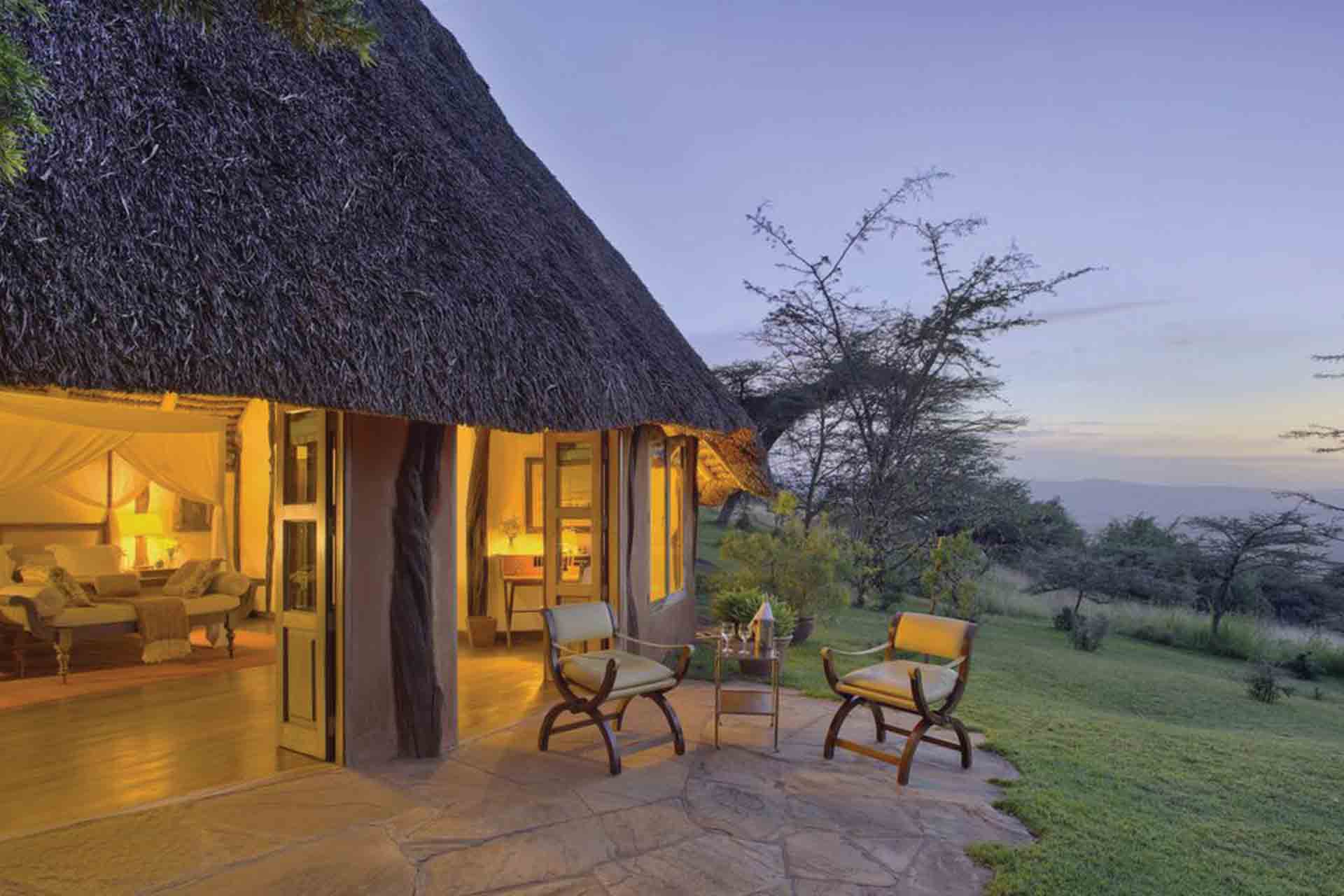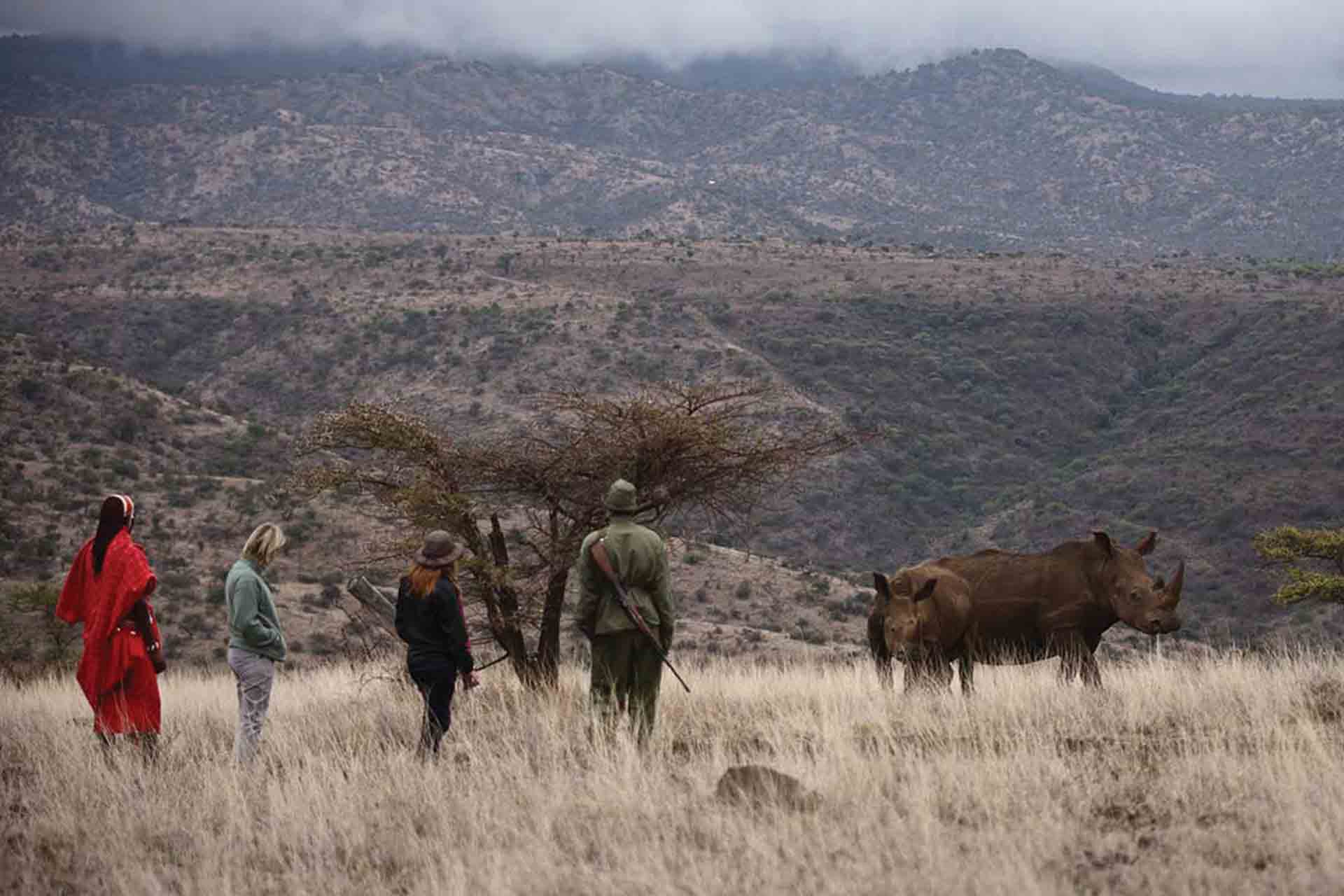Ker & Downey Africa > Journal > Rhino Conservation in Lewa Wildlife Conservancy
Rhino conservation is at the heart of World Rhino Day.
Rhinos are keystone species in Africa and an important member of the Big Five. These mega-herbivores are one of Earth’s oldest living mammals, and essential to the survival of entire ecosystems. The grassy plains of Africa were once home to tens of thousands of rhinos, who thrived in their natural habitat. Sadly, since the onset of the 20th century, rhino poaching has soared, pushing this iconic species to the brink of extinction.

In the 1960s, Kenya was home to around 20,000 black rhinos. While the surge of poaching over the two decades that followed reduced this population to less than 300, black rhino populations have almost doubled to just over 850. While this may be positive news, there is still a long, long way to go for this critically endangered species. The survival of this iconic mammal rests on long-term rhino conservation solutions that involve educating communities, securing its habitat, and reducing the demand for its precious horn.

The Lewa Wildlife Conservancy is located in northern Kenya and is home to a wide variety of wildlife including the endangered black rhinos. Since 1983, Lewa’s primary goal has been to provide a safe haven for these incredible creatures. Lewa is the leading pioneer in rhino conservation in East Africa. From an initial population of just 15, 169 rhinos roam the grasslands today – safe from the destructive hands of poachers.
The Lewa (and neighbouring Borana) landscape hosts these robust mammals and stretches of 93,000 acres. The land is also home to 10 lodges, all offering unique and unforgettable safari experiences. Elewana Kifaru House is one such lodge, offering guests a haven of luxury in the bush.
With a focus on luxury and exclusivity, the lodge comprises just five thatched cottages and magnificent views of the plains and active waterhole.

Godfrey Kinyaga, the Head Guide at Elewana Kifaru House, tells us that the name, ‘Kifaru’ is a Swahili word for rhino. Godfrey is a Maasai warrior and has lived in the region all his life. He is a knowledgeable guide and a passionate conservationist with a fervent respect for these rare and endangered icons of Africa.

Growing up as a young Maasai warrior, I lived next to the Lewa Wildlife Conservancy and witnessed the successful rhino conservation efforts from a young age. This stimulated me to become a guide in this world-renowned conservancy where I can get to talk about this iconic species.

Lewa Wildlife Conservancy is home to 14% of the Kenyan rhinos. It is a UNESCO World Heritage site and there is a fantastic relationship amongst the communities, which is a key contributing factor to successful rhino conservation.
There are many ways for guests staying here at Kifaru House can contribute to rhino conservation efforts:
They can donate money; adopt and name a rhino; support the women’s micro-credit projects in the communities, or sponsor teachers and students with bursaries.

They can also support the Lewa Wildlife Clinic here on the conservancy which supports all the communities in the area. We have one ambulance that services the community that was given to us by a generous donor. They can support the Lewa security teams by donating binoculars and rations too. Every little bit helps!

As an iconic and critically endangered species, rhinos need global attention in order to thrive. There needs to be a serious commitment by both government, community and private agencies to assist in their survival for future generations to come.
Let’s make the world a safe haven for rhinos and promote rhino conservation far and wide. Lewa is doing it!
Karibu sana (or ‘welcome to’) Elewana Kifaru House, where you are guaranteed to see a rhino!
Happy World Rhino day!
Interested in an encounter with one of Africa’s most iconic species? Get in touch with one of our expert LuxVenture® designers today to start planning a Big Five safari to East Africa to witness rhino conservation first-hand. It will be one of the most unforgettable experiences of your life!
Ker & Downey® Africa is compliant with COVID-19 Industry Protocols.


Head office: 7 Bree Street, 6th Floor, Touchstone House, Cape Town, South Africa
+27 (0)21 201 2484
enquiries@ker-downeyafrica.com
United Kingdom: Sportsman Farm, St Michaels, Tenterden, Kent
Ker & Downey® Africa is compliant with COVID-19 Industry Protocols.